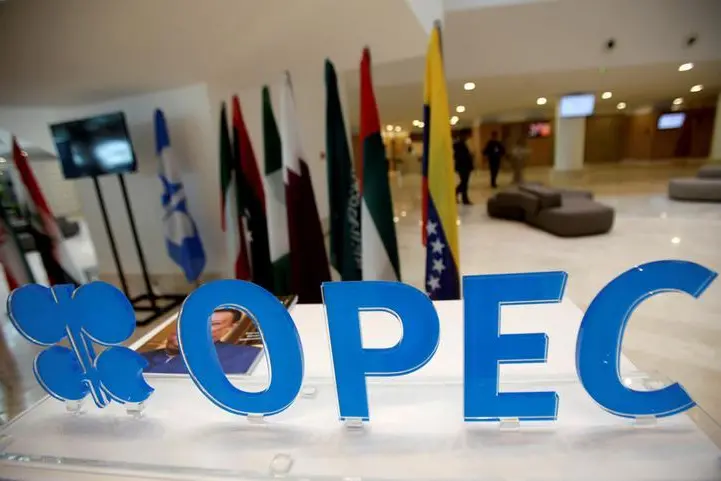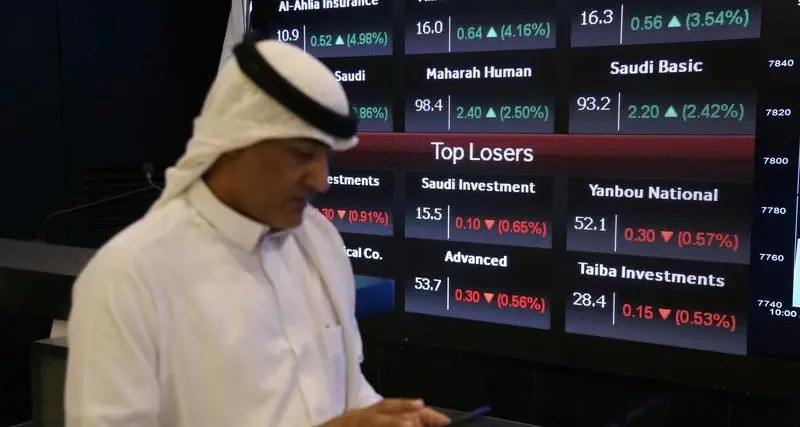PHOTO
SINGAPORE: Oil markets were treading water early on Tuesday, continuing the cautious trading seen over the last week as bullish factors such as ongoing OPEC-led production cuts and Middle East tensions are countered by rising U.S. output.
Brent crude futures were at $63.13 per barrel at 0127 GMT, down 3 cents from their last close. U.S. West Texas Intermediate (WTI) crude was at $56.72 per barrel, down 4 cents.
The dips came after both crude benchmarks early last week hit highs last seen in 2015, but traders said the market had lost some momentum since then.
"Oil is fairly calm. OPEC is talking its book and boosting demand expectations but the U.S. rig count seems to have countered that," said Greg McKenna, chief market strategist at futures brokerage AxiTrader.
Price support came from ongoing output cuts led by the Organization of the Petroleum Exporting Countries (OPEC) and Russia, which have contributed to a reduction in excess supplies.
OPEC is due to meet on Nov. 30 to discuss further policy, and the group is expected to agree an extension of the cuts beyond their current expiry date in March 2018.
Also, tensions in the Middle East raised the prospect of supply disruptions, traders said, though they were cautious on betting on further price rises.
"Prices ... are starting to look like a pause or pullback is needed," said McKenna.
U.S. oil producers have raised output
C-OUT-T-EIA
by more than 14 percent since mid-2016 to a record 9.62 million barrels per day (bpd).
Rating agency Fitch said in its 2018 oil and gas sector outlook that it assumed "average oil prices will be broadly unchanged year-on-year and that the recent price recovery with Brent exceeding $60 per barrel may not be sustained".
So far, the 2017 average Brent price has been $54.5 per barrel.
"Lower costs and U.S. shale growth could restrict oil prices below $60 per barrel in the long-term," Fitch said.
Looking further out, the International Energy Agency said on Tuesday global oil demand would only fall modestly due to the expected rise of electric vehicles, with consumption in petrochemicals and other transportation still growing.
In its World Energy Outlook 2018, the IEA estimates there will be 50 million electric vehicles on the road by 2025 and 300 million by 2040, from around 2 million now. This is expected to cut 2.5 million bpd, or about 2 percent, off global oil demand by that time.
Still, the IEA's "New Policies Scenario", based on existing legislation and announced policy intentions, expects oil prices to rise towards $83 a barrel by the mid-2020s. (Reporting by Henning Gloystein; Editing by Joseph Radford) ((henning.gloystein@thomsonreuters.com; +65 6870 3263))
Brent crude futures were at $63.13 per barrel at 0127 GMT, down 3 cents from their last close. U.S. West Texas Intermediate (WTI) crude was at $56.72 per barrel, down 4 cents.
The dips came after both crude benchmarks early last week hit highs last seen in 2015, but traders said the market had lost some momentum since then.
"Oil is fairly calm. OPEC is talking its book and boosting demand expectations but the U.S. rig count seems to have countered that," said Greg McKenna, chief market strategist at futures brokerage AxiTrader.
Price support came from ongoing output cuts led by the Organization of the Petroleum Exporting Countries (OPEC) and Russia, which have contributed to a reduction in excess supplies.
OPEC is due to meet on Nov. 30 to discuss further policy, and the group is expected to agree an extension of the cuts beyond their current expiry date in March 2018.
Also, tensions in the Middle East raised the prospect of supply disruptions, traders said, though they were cautious on betting on further price rises.
"Prices ... are starting to look like a pause or pullback is needed," said McKenna.
U.S. oil producers have raised output
Rating agency Fitch said in its 2018 oil and gas sector outlook that it assumed "average oil prices will be broadly unchanged year-on-year and that the recent price recovery with Brent exceeding $60 per barrel may not be sustained".
So far, the 2017 average Brent price has been $54.5 per barrel.
"Lower costs and U.S. shale growth could restrict oil prices below $60 per barrel in the long-term," Fitch said.
Looking further out, the International Energy Agency said on Tuesday global oil demand would only fall modestly due to the expected rise of electric vehicles, with consumption in petrochemicals and other transportation still growing.
In its World Energy Outlook 2018, the IEA estimates there will be 50 million electric vehicles on the road by 2025 and 300 million by 2040, from around 2 million now. This is expected to cut 2.5 million bpd, or about 2 percent, off global oil demand by that time.
Still, the IEA's "New Policies Scenario", based on existing legislation and announced policy intentions, expects oil prices to rise towards $83 a barrel by the mid-2020s. (Reporting by Henning Gloystein; Editing by Joseph Radford) ((henning.gloystein@thomsonreuters.com; +65 6870 3263))












